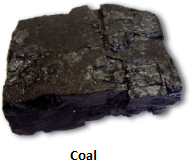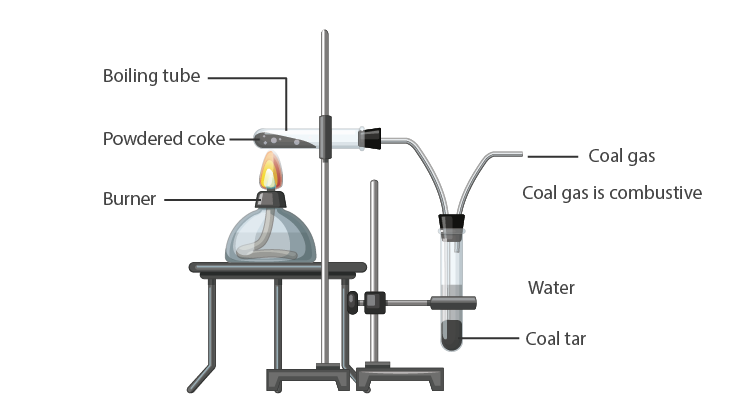
CBSE Class 8 Science Notes Chapter 3: Chapter 3 of CBSE Class 8 Science, titled Coal and Petroleum , explains the formation, types, and uses of fossil fuels like coal, petroleum, and natural gas. Coal is formed from dead plant matter under heat and pressure over millions of years.
It is used in power plants and industries. Petroleum, known as crude oil, is formed from the remains of marine organisms and refined into products like petrol, diesel, and kerosene. The chapter also covers natural gas, a cleaner fuel, and the concept of inexhaustible and exhaustible resources.CBSE Class 8 Science Notes Chapter 3 Overview
Chapter 3 of CBSE Class 8 Science, Coal and Petroleum, explores the origin, types, and significance of fossil fuels, including coal, petroleum, and natural gas. These fuels, formed over millions of years from the remains of dead plants and animals, are non-renewable and crucial for energy production. The chapter emphasizes the classification of resources into exhaustible (like fossil fuels) and inexhaustible (like solar and wind energy). Since fossil fuels are limited and cannot be replenished, the chapter encourages their judicious use and conservation to protect the environment from pollution and global warming.CBSE Class 8 Science Notes Chapter 3 PDF Download
The CBSE Class 8 Science Notes for Chapter 3, Coal and Petroleum, provide a concise summary of the key topics related to fossil fuels. These include the formation, types, and uses of coal, petroleum, and natural gas. The notes explain the classification of resources into exhaustible and inexhaustible, highlighting the non-renewable nature of fossil fuels. Students are also made aware of the environmental impact of using fossil fuels, like air pollution and global warming. The notes serve as a helpful revision tool for students, covering important concepts in an organized and easy-to-understand format.CBSE Class 8 Science Notes Chapter 3 PDF
Quick CBSE Class 8 Science Notes Chapter 3 Coal and Petroleum
Here we have provided CBSE Class 8 Science Notes Chapter 3 Coal and Petroleum -Introduction to Coal and Petroleum
Energy
Natural resources can yield energy in a variety of ways, and it can also be transferred from one body to another as labour or heat.Types of Energy
Some different types of energies are:- Mechanical energy
- Chemical energy
- Thermal energy
- Nuclear energy
- Solar energy
- Wind energy
- Sound energy
- Electrical energy
Energy Conversion from One Form to Another
Although energy cannot be generated or destroyed, it can change into many forms. For instance, sound energy is transformed into electrical energy in microphones.Natural Resources
The resources that the earth provides are known as natural resources. The following are two categories of natural resources. Nature contains an infinite supply of renewable and non-exhaustible natural resources, such as wind and sunlight. There are finite amounts of non-renewable and exhaustible natural resources in the environment. Petroleum and coal, for instance.Fossil Fuels
Fossil fuels, such as natural gas and coal, are finite resources that result from the decomposition of decomposing organic matter.Energy Stored in Fossil Fuels
Energy stored in fossil fuels are derived from decayed animals and plants that have existed for millions of years.Energy Utilisation from Fossil Fuels
- 40% of energy is used by the industries
- 24% of energy is used by the Transportation sector
- 6% of energy is used by farms
- 30% of energy is used for domestic and other purposes.
Coal Formation
Coal
Black-colored coal is a fossil fuel that is mined from the earth and utilised for a variety of fuel needs.Peat
Peat is a partially decomposed plant material that is used as a black, fibrous fuel. It is the initial phase of coal formation.Formation of Coal
 The dead plants turn into coal when they are heated to high pressures. We refer to this process as carbonisation.
The dead plants turn into coal when they are heated to high pressures. We refer to this process as carbonisation.
Types of Coal
Coal is a fossil fuel formed from the remains of plants subjected to heat and pressure over millions of years. It is categorized into four main types based on their carbon content, hardness, and energy efficiency:Types of Coal
The four types of coals are as follows.- Anthracite
- Bituminous
- Sub-bituminous
- Lignite
Destructive Distillation of Coal
The method of heating coal without air is known as destructive distillation. This method yields coke, coal tar, ammonia, and coal gas as byproducts.
Coal Tar
 Coal tar is a black thick liquid with an unpleasant smell and is used as a starting material for manufacturing various substances.
Coal tar is a black thick liquid with an unpleasant smell and is used as a starting material for manufacturing various substances.
Coal Gas
Coal gas is a fuel produced during the destructive distillation of coal. It is used as a fuel in many industries.Ammonia Liquor
Ammonia liquor or ammonium hydroxide is one of the by-products formed during the destructive distillation of coal. It is used to make fertilizers.Coke
Coke is a black-coloured substance and pure form of carbon used for manufacturing steel and extraction of metals.Extraction of Oil

Oil Wells and Reservoirs
To raise oil or other hydrocarbons to the surface, an oil well is utilised. It's a lengthy opening made in the earth. An underground hydrocarbon-based oil reservoir is a lake of oil.Extraction of Oils
The process of extracting usable oil from its surface location on Earth is known as extraction of oil.Determining the Characteristics of Oil Reservoirs
Oil reservoir properties include: By recognising the reflected sound waves, instruments such as geophones are used to detect the presence of oil in rocks. Samples of oil are extracted using exploratory wells.Primary Production of Oil
The natural flow of oil is called the primary production of the oil. It can persist for days or years.Secondary Recovery Process
The secondary process can be carried out by the process of:- Water flooding
- Injecting chemicals into the reservoir.
- Injecting carbon dioxide into the reservoir.
- Microbially enhanced oil recovery
Fractional Distillation
Fractional distillation is a separation technique used to separate a mixture of liquids based on their different boiling points. It is commonly applied in refining petroleum to extract useful products like gasoline, diesel, kerosene, and other fractions. The process involves heating crude oil in a furnace, causing it to vaporize. The vapor is then introduced into a fractional distillation column, which has different levels or trays. As the vapor rises, the temperature decreases. Substances with higher boiling points condense at lower levels, while those with lower boiling points rise further up before condensing. This allows for the separation of various components like petrol, diesel, and jet fuel.Crude Oil
One kind of fossil fuel is crude oil, which is an unrefined petroleum product made up of hydrocarbons.Boiling Point and Vaporisation
The temperature at which the pressure of the liquid and the pressure of its surroundings equalise is known as the boiling point. The process of turning anything from a liquid into a gas is called vaporisation.Oil Refining or Fractional Distillation
Fractional distillation, often known as oil refining, is the technique of utilising fractional columns to separate liquids with various boiling points at different temperatures.Uses of Products Obtained in Fractional Distillation
Products and their uses:- LPG: Fuel for home and industry
- Petrol and diesel: Motor and aviation fuel
- Kerosene: Fuel for stoves and lamps
- Lubricating oil: Lubrication
- Bitumen: Used to make paints
- Paraffin wax: Used to make ointments, candles
Shortage of Petroleum and Tips for Its Conservation
To prevent shortages, petroleum should be utilised with caution. PCRA suggested a few ways to reduce petrol and diesel use, such as maintaining a steady speed for cars.Natural Gas
Natural gas is a fossil fuel primarily composed of methane (CH₄) and is formed from the remains of ancient marine organisms over millions of years under high pressure and temperature. It is found in underground rock formations, often alongside oil deposits, and is extracted through drilling.Hazards and Estimates of Fossil Fuels
Hazards caused due to excessive use of fossil fuels:- Air pollution
- Global warming
- Coal may persist for another century and petroleum for another 40 years.
Natural Gas
Natural gas is a fossil fuel that has no colour and no smell that is moved from one location to another via pipes.CNG and Its Advantage
CNG is natural gas that has been kept under high pressure. The following are CNG's benefits. The fuel is cleaner. It produces less pollution. It is suitable for direct burning application.Occurrences of Natural Gas in India
Natural gas is found in parts of Tripura, Rajasthan, Maharashtra, Tamil Nadu, and Andhra Pradesh.Benefits of CBSE Class 8 Science Notes Chapter 3
The CBSE Class 8 Science Notes for Chapter 3, Coal and Petroleum, provide several benefits to students, including:Conceptual Clarity : The notes simplify complex topics like the formation of fossil fuels, types of coal, and petroleum products, making it easier for students to understand.
Easy Revision : Condensed notes help students quickly revise key concepts before exams, allowing for better retention of information.
Environmental Awareness : The chapter highlights the need for conserving non-renewable resources and discusses the environmental impact of excessive fossil fuel use, promoting awareness about sustainability.
Energy Resources Understanding : Students learn about different energy sources, their uses, and the significance of both exhaustible and inexhaustible resources.
Application of Knowledge : The notes link theoretical concepts to real-world applications, such as the use of coal in power plants and petroleum in vehicles, enhancing students’ practical understanding.
Foundation for Higher Studies : This chapter lays the groundwork for more advanced topics in energy resources and environmental science, which students will encounter in higher classes.
CBSE Class 8 Science Notes Chapter 3 FAQs
What is the main source of coal and petroleum?
How coal and petroleum are used?
What are the facts about coal and petroleum?
What is the reason for coal and petroleum?









